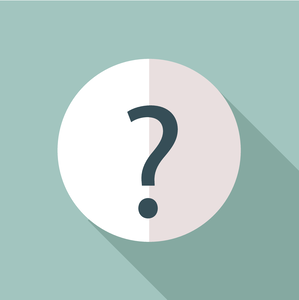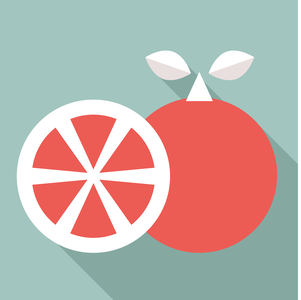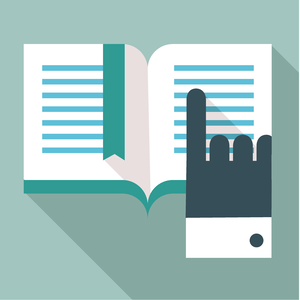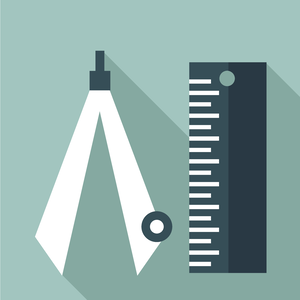Grammar for IELTS Writing Task 2 (Complete Guide)
Unsure how to improve your score in grammar for IELTS Writing Task 2?
The good news is that you can increase your grammar score in a relatively short amount of time.
In this lesson, you’ll learn the IELTS test requirements for grammar and my unique strategy to improve your grammar score.

Here are the topics that will help you do this;
- What is Grammatical Range and Accuracy?
- How IELTS examiners decide your score
- What bands 5 to 9 look like
- Getting the highest possible score on test day
- Useful sentence structures for Writing Task 2
- Approaches to avoid when studying grammar
- Strategy to improve grammar for IELTS Writing Task 2
- Should I use Grammarly?
Prefer to watch the video version?
What is Grammatical Range and Accuracy?
Grammatical Range and Accuracy is the name of the band score that IELTS uses to assess your grammar ability.
The three other band scores are; Task Achievement, Coherence & Cohesion and Lexical Resource.

The requirements for each of these band scores are outlined by IELTS in this document.
Because a lot of academic vocabulary is used in the band descriptors document, there are probably parts of it that you don’t understand.
However, this isn’t an issue because the descriptions you’re about to read are much easier to follow.
How IELTS examiners decide your score
As the name implies, the examiner will be checking for the range of grammatical structures and the accuracy of the grammar used throughout your Writing Task 2 answer.
To determine your Grammatical Range and Accuracy band score, the examiner checks for;

Let’s look at each of these in more detail.
Clarity of communication
The most noticeable thing for examiners is how easily they can understand your essay.
If grammar mistakes make an essay difficult to understand, that is a band 5 or lower for Grammatical Range and Accuracy.

For band 6, the examiner can understand the entire essay but not always easily.
To get a band 7 or higher, the grammar in your essay needs to cause absolutely no difficulty to the examiner. There can be some mistakes, but they cannot affect clarity.
Frequency of errors
The next thing the examiner will check is how often you make grammar mistakes in your writing.
The public band descriptors document clearly outlines the frequency of mistakes that are acceptable for each band score;

- band 5 = frequent grammatical errors.
- band 6 = some grammatical errors.
- band 7 = a few grammatical errors.
- band 8 = occasional grammatical errors.
- band 9 = rare minor grammatical errors.
Of course, there is more involved!
To get a band 7 and 8 in Grammatical Range and Accuracy, you also need to have ‘error-free sentences’.
What is an error-free sentence?
An error-free sentence is a sentence with absolutely no grammar mistakes in it.
It’s okay if these sentences have vocabulary errors as we are only concerned with grammar for the Grammatical Range and Accuracy score.

How many error-free sentences do I need?
IELTS doesn’t give a specific number.
What we are told is that;
- band 7 = frequent error-free sentences
- band 8 = a majority of error-free sentences
However, we do know that the average Writing Task 2 essay is about 13 sentences.
With this in mind, we can say that you need;
- at least 6 or 7 error-free sentences for a band 7.
- about 9 or 10 error-free sentences for a band 8.
What about band 9?
Band 9 needs to be pretty much perfect. It’s okay to make some minor errors, but they need to be ‘slips’.
A slip is a mistake that is made accidentally while writing rather than a mistake that is made because of a lack of ability in grammar.
How would an examiner know the difference?

Let’s look at these two examples;
Candidate A makes 3 grammar mistakes
- Mistake 1 = comma
- Mistake 2 = article
- Mistake 3 = subject-verb agreement
Because Candidate A made three different types of grammar mistakes, the examiner will conclude that these are slips.
Candidate B makes 3 grammar mistakes
- Mistake 1 = comma
- Mistake 2 = comma
- Mistake 3 = comma
Because Candidate B is making the same type of mistake repeatedly, the examiner will conclude that this person doesn’t know how to use commas and that these mistakes are due to a lack of ability to use commas correctly.
Range of structures
To get a high score, the examiner must also see a good range of structures in your essay.
If you only use simple sentences in your answer, your score won’t be higher than a band 4, so it’s essential that you attempt a variety of structures.
In particular, the examiner expects you to use a range of compound and complex structures.

Let’s go through these different structure types to make sure you understand what they are.
Simple Sentences
1. I ate fruit for my breakfast.
This is referred to as a simple sentence as it contains one independent clause.
Sentences like this should rarely appear in your essay if you need a band 7 or higher.
Compound Sentence
2. I ate fruit for my breakfast, and I enjoyed it very much.
This is referred to as a compound sentence as it contains two independent clauses.

Complex Sentence
3. I enjoyed the fruit which I ate for my breakfast very much.
This is a complex sentence as it contains a dependent clause. The dependent clause here is ‘which I ate for my breakfast’.
Compound-complex sentence
4. I enjoyed the fruit which I ate for my breakfast very much, and I plan to eat the same thing tomorrow.
This is a compound-complex sentence as it has at least two independent clauses and at least one dependent clause.

What bands 5 to 9 look like
Next, we will look at examples of band scores 5 to 9 for Grammatical Range and Accuracy to help you better understand what you need to do.
Before we look at specific examples, though, I’d like to explain something about the band descriptors.
This image outlines the requirements for band 7 and band 6 in Grammatical Range and Accuracy as shown in the band descriptors document.

Let’s imagine an IELTS examiner looked at a Writing Task 2 essay and determined;
- [it] uses a wide range of structures (a band 7 description),
- the majority of sentences are error-free (a band 7 description),
- [it] makes some errors in grammar and punctuation, but the errors rarely reduce communication (a band 6 description).
What band score would this essay get?
For Grammatical Range and Accuracy, it would receive a band 6 because the essay doesn’t fulfil all the requirements of the band 7 score.
This information indicates that we must give enough attention to all the various aspects of grammar before the IELTS test.
With that in mind, let’s look at examples of band scores 5 to 9 for Grammatical Range and Accuracy.
You’ll notice all the various requirements that I’ve already described, and all the mistakes are highlighted to help you notice the frequency of mistakes.
Band 5
My favourite fruit is pear. The pear taste delicious and I am eating them nearly every day . the pear is healthy too which I eat a lot.I can able carrying convenient with the pear.and i brought the pear to the office when i am eating the pear at lunch.
Band 6
My favourite fruit is the pear. The pears taste delicious which is why I am eating them nearly every day . The pear is healthy too which means that I can eat a lot of them without being concerned.I can conveniently carry the pear unlike watermelons and durians so i brought the pear to the office where i eat the pear at lunch.

Band 7
My favourite fruit is the pear,and it tastes delicious which is why I eat them nearly every day. Pears are healthy too which means that I can eat a lot of them without being concerned. I can conveniently carry the pear, unlike watermelons and durians, so i brought the pear to the office where i eat it at lunch.
Band 8
My favourite fruit is the pear, and it tastes delicious, which is why I eat them nearly every day. Pears are healthy too which means that I can eat a lot of them without any concern. i can conveniently carry a pear, unlike watermelons and durians, so i usually bring a pear to the office where i eat it at lunch.
Band 9
Pears are my favourite fruit, and because they’re so delicious, I eat one nearly every day. They’re good for my health too, which means that I don’t need to be concerned about how often I eat them. Unlike some fruits, such as watermelons and durians, pears are convenient to carry around, so i usually take one to my office to eat with my lunch.
Getting the highest possible score on test day
If you’ve already completed my lesson on Lexical Resource, you’ll know it’s essential that you don’t take any risks with your vocabulary on test day.
However, that advice does not apply to your Grammatical Range and Accuracy score.

To get the highest possible score for grammar, you need to carefully balance the range and the level of accuracy in your writing.
If your range is too narrow, you will get a low score.
On the other hand, if you push yourself too far and use a range beyond your ability, you’ll make too many mistakes and get a low score for a lack of accuracy.
To help you understand the best approach, let’s look at the 5 scenarios below.
Situation 1
- Grammatical Range – far beyond candidate’s ability
- Grammatical Accuracy – so bad that examiner can’t understand
This candidate is going to get a low score because their grammatical accuracy is too low.
Situation 2
- Grammatical Range – beyond candidate’s ability
- Grammatical Accuracy – many errors
This candidate would get a better score if they didn’t push themselves beyond their ability.
Situation 3 (This is where you want to be)
- Grammatical Range – candidate can comfortably use this range
- Grammatical Accuracy – some errors
This candidate has a perfect balance of range and accuracy. This will get the candidate the highest possible score they’re capable of.

Situation 4
- Grammatical Range – a range which candidate can use very well
- Grammatical Accuracy – a few errors
This candidate could get a better score if they push themselves to use a wider range.
Situation 5
- Grammatical Range – Range of grammar which candidate has completely mastered
- Grammatical Accuracy – No errors
This candidate is going to get a low score because their grammatical range is too narrow.
Useful sentence structures for Writing Task 2
Learning a few structures will not automatically give you a higher score in Grammatical Range and Accuracy, but it will give you a push in the right direction.
I have a few suggestions to help you build on top of what you already know.

Conditional sentences
Not every Task 2 essay requires a conditional sentence, but they are a very useful set of structures to have in your toolbox.
If you don’t already have a strong grasp of conditional structures, I would recommend that you master these before your test.
Here is a nice summary of what they are and when to use them.
Adverbial phrases
Adverbial phrases can be added to the start of a sentence and are an easy way to avoid using simple sentences in your essay.
Adverbial phrases add information like when, where, how and why. For example,

Yesterday, I ate an apple.
At work, I eat apples.
Happily, I ate my apple.
To stay healthy, I eat apples.
These adverbial phrases can be a lot more detailed as well and can help to make sure the context of your sentence is completely clear.
Whenever I used to stay at my grandparents’ house, I ate lots of apples.
Up on the roof of my apartment block, I ate an apple.
With a great sense of enjoyment, I ate my apple.
To ensure that I’m getting all the vitamins and minerals that my body needs, I eat apples.
Functional structures
In Task 2, we often need to explain, give our opinion, discuss opposing views and so on.
There are various structures that can help us do this, and you should definitely make a note whenever you discover one.

Here are a few to get you started;
Opinion + explanation
The reason why I think … is that…
The primary reason why I think everyone should eat fruit regularly is that it provides people with essential vitamins.
Other view + opinion
Despite many people feeling that…, I would argue that…
Despite many people feeling that children should be allowed to make their own decisions, I would argue that children should have no decision whether they eat fruit every day or not.
Other view + opinion + explanation
Even though…, I believe that… as …
Even though children prefer to eat junk food, I believe that eating fresh fruit is more important as it will have a better long-term benefit for their health.
Listing advantages or disadvantages
By…,… not only… but also…
By eating fruit, children not only enjoy a tasty snack but also have healthier bodies.
OR
By eating junk food, children not only become overweight but also increase the risk of diabetes.

Conflicting views
It is argued by some that…, while others feel that…
It is argued by some that children should be allowed to eat what they want, while others feel that it’s necessary to insist that children eat at least one piece of fruit every day.
Comparing the past with the present
For example, if people wanted to… in the past, they had to …, whereas these days, people can …
For example, if people wanted to eat strawberries in the past, they had to wait until summer, whereas these days, people can buy strawberries all year round.
Cause and effect
As a result of…, …
As a result of how much marketing is done for junk food, children are continuously encouraged to have unhealthy diets.
Approaches to avoid when studying grammar
There are a few mistakes that I see students make over and over again.
I want to go through these quickly to make sure that your hard work results in progress.
Reading grammar books
Don’t get me wrong!
Grammar books are great when they are used correctly.
The issue here is that some students purchase a grammar book and read it from start to finish.

This also applies to watching lots of grammar videos on YouTube.
This is a very unfocused method of improving your grammar and will waste a lot of time.
Let’s say, for example, that your key grammar mistake is with articles. If you read a full grammar book, you’ll only have spent a very short amount of time on your biggest weakness.
Doing lots of practice exercises
Again, practice exercises are useful but only when used correctly.
As part of a larger strategy to improve grammar for IELTS Writing Task 2, they’re great, but you cannot rely on them alone.
If you do nothing but practice test after practice test, you can expect your grammar to improve very slowly.

Ignoring the complicated things
Instinctively, our brains want to avoid complicated things.
This happens to everyone.
For example, if I ask you to do this math question, you’ll likely do it because it’s easy.
6 x 9 =
However, when I ask you to do this question, you’ll probably skip it.
(12 x 8) – (7 x 9) =
We tell ourselves that it’s easy, that we already know how to do this, that we could do it if we really wanted to, that it’s not important…
Sound familiar?
It’s not just you; it’s everyone in the world. This is just how our brains are wired.

To overcome this, you need to recognise what you’re doing and force yourself to study any grammar points that seems complicated.
The good news is that this grammar area you wanted to avoid is probably the exact thing you need to study to improve your grammar for IELTS Writing Task 2.
Think of it as a small victory in finding something you need.
Thinking of grammar as a math equation
A lot of grammar is introduced to students in the form of a math problem.
sbj + verb + obj
adj + noun
sbj + have/has + present participle
These forms are helpful for recognising and constructing different parts of grammar.

However, this is not what grammar looks like.
Real grammar looks like this sentence you’re reading right now.
You need to make sure that you’re actively transferring your grammar knowledge from the rules you learn into the way you write and speak.
Strategy to improve grammar for IELTS Writing Task 2
Improving your ability in various aspects of grammar can be done in a short period of time.
For this reason, you can continue studying grammar right up until your IELTS test day.
Here is the strategy I want you to follow to improve your Grammatical Range and Accuracy score;

- Discover your key mistake
- Study the rules
- Active reading
- Controlled practice
- Start writing again
- Check your band score
Discover your key mistake
There will be one or two grammar areas that result in the majority of mistakes in your writing.
Remember that the frequency of mistakes in your essay is used to determine your score, so it’s best to focus on the mistake that you make most often.

This will improve your score as efficiently as possible.
But how can you discover which mistakes you make most often?
Here are some options;
#1. Ask an English-speaking friend
If possible, you should ask a native English speaker to help you with this.
Give a Task 2 essay you’ve written to your friend and ask them to circle all the mistakes.
Most native English speakers don’t know about grammar, but they will easily know when something is wrong.

Once all the mistakes are circled, you need to identify which type of grammar mistake each one is.
Finally, count the different types of mistakes to see which one you’ve made most often.
#2. Ask an English teacher
This is a better option than asking a friend as an English teacher can also identify what types of mistakes you’re making.
All you need to do then is count the number of times you made each mistake type and focus on improving the one you made the most.
#3. Use an online writing correction service
At this point in time, computer software isn’t accurate enough to do this effectively.
This means that it’s best to use a correction service where a real person is correcting your writing.

Study the rules
Next, you will need to study the grammar rules for your key grammar mistake.
I know that you’ve likely seen these rules hundreds of times already.
Just remember, you’re not looking for rules you haven’t seen before; you’re looking for rules you don’t fully understand.

Any reliable resource is suitable for this stage of your grammar improvement.
In particular, I’m fond of Cambridge Dictionary and the grammar references by BBC for; basic, intermediate, upper-intermediate and towards advanced.
I’d also recommend the books; Practical English Usage by Michael Swan and English Grammar in Use by Raymond Murphy.
It can also be beneficial to search online for the differences between two grammar points that seem similar to you. Click here for an example.
Once you’ve understood and familiarised yourself with all the various grammar rules, move on to the next step.
Active reading
The next step is to start looking out for your key grammar mistake in texts.
I know that you’ll be eager to start using the grammar already, but you need to make sure that you understand it perfectly first.
Let’s imagine that you’re improving your use of modals. This is what you would do;

Read something in English and stop every time you find a modal. Ask yourself;
- Why was that modal used rather than a different modal?
- Which grammar rule applies to this modal being used?
- Would I have used this modal correctly in my writing?
If necessary, do some additional grammar research and make extra notes in your grammar notebook.
Continue reading texts in this way until you’re confident that you understand this grammar point.
Now, move on to the next step.
Controlled practice
Controlled practice means using the grammar in a way that it’s easy to find any mistakes we make.
The most practical way to do this is with practice grammar exercises.
Some practice exercises are for grammar in general rather than specific grammar areas, so these ones are not beneficial for us.

We need to use practice exercises that focus on the specific grammar area we’re studying.
I would recommend the following sites for this because they are reliable, and the exercises are organised into specific grammar areas.
Once you’ve finished a practice exercise, you’ll be shown how many answers you’ve got correct.
If you get most of the answers correct, move on to the next step in this strategy. If you’re getting a lot wrong, move back to the previous step.
A word of warning
A lot of these practice exercises use multiple-choice questions.
If you’re guessing answers and getting them correct because you’re lucky, that doesn’t mean you know the grammar.
Start writing again
It’s time to start writing Task 2 essays again.
At this point, we expect to see fewer mistakes in your writing.
However, we are not expecting zero mistakes. There will still be some mistakes, but that’s normal, so there’s no need to be disappointed about this.

You will also make some slips while writing, so remember to check your writing and correct as many of these as possible.
Spend a few days writing by yourself and when you’re comfortable, move on to the next step.
Check your band score for Grammatical Range and Accuracy
In general, an IELTS expert isn’t necessary to improve grammar for IELTS Writing Task 2.
However, you might be unsure of where you are in relation to the IELTS test.
For instance, if you need a band 8 in writing, you don’t want to book your test until you can get a band 8 in Grammatical Range and Accuracy.

In this case, you can get an IELTS expert to check your work so that you know if you need to continue improving your grammar or not.
There are many IELTS writing correction services online so just choose the one that seems most reliable to you. You can find essay correction service here or email <lar@completetestsuccess.com>.
After you’ve got your feedback, you’ll know if you’re ready for the test or if you need to discover a new key grammar mistake to focus on next.
Should I use Grammarly?
I get asked about Grammarly a lot, so I thought you’d want to know my thoughts on this software.
Firstly, you need to understand that it’s not designed for English students.

I use Grammarly all the time, and it’s a great piece of software, but it is not perfect.
It often finds mistakes in my writing that I need to fix, but sometimes, it makes incorrect recommendations.
In particular, I notice that Grammarly regularly makes inaccurate suggestions for subject-verb agreement and complex sentences.
That’s fine for me because I know when to accept and reject the recommendations.
For you, however, it’s not going to be clear when the software is right and when it’s wrong.
I’m not saying that you shouldn’t use it; I’m just saying that you can’t rely on it completely and will need to do your own research instead of accepting every suggestion it makes.
One thing you can definitely rely on, though, is the platform’s excellent descriptions and explanations of grammar which you can find here.
What now?
If you need to improve your grammar for IELTS Writing Task 2, I encourage you to combine the strategy you’ve learned here with my Vocabulary Improvement Strategy.
Both require you to read texts, so you will get more out of your time by combining them.
If you haven’t already completed my lessons for the other Writing Task 2 bands, Task Achievement and Coherence & Cohesion, those would be the most logical lessons for you to continue with.
Besides that, I hope you learned a lot and thanks for completing the lesson. 🙂
I hope you work hard, make steady improvement and get your IELTS scores as soon as possible.
